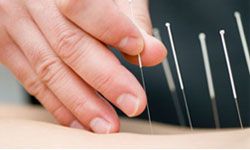There are nearly as many methods for quitting smoking as there are ex-smokers. Those who succeeded in breaking nicotine's bonds cite everything from quitting cold turkey to hypnosis and even prescription lozenges as effective ways to stop smoking. Most of the tools offer temporary relief from the physical withdrawal symptoms of smoking cessation, but do not address the powerful psychological addictions. These are best addressed by behavioral modification counseling or group therapy, and by other techniques used successfully by former smokers, which are outlined in Tips from the Pros. Strategies that address both the physical and psychological addictions are the most likely to succeed.
The first two weeks after quitting smoking are critical to a person's success. Withdrawal symptoms begin within just a few hours of the last cigarette smoked then will increase in intensity until these symptoms peak after 3 to 5 days. After two weeks, the withdrawal symptoms disappear. Withdrawal symptoms include:
Advertisement
Physical Symptoms:
- Headache
- Tingling in hands and feet
- Sweating
- Intestinal pain and discomfort in the form of cramps or nausea
- Sore throat, coughing, general respiratory problems similar to cold symptoms (the good thing, though, is this means the smokers' lungs are clearing)
Emotional Symptoms:
- Extreme mood swings: temper tantrums, feelings of dependency, neediness
- Irritability
- Anxiety
- Insomnia
- Lack of mental clarity — difficulty in concentrating
- Depression — in the short term, some smokers actually grieve the loss of cigarettes. Planning for these feelings of loss can help a smoker get through the early withdrawal symptoms of depression.
See the next page to view some of the different tools to help you cope with symptoms and stop smoking.





